Related Research Articles
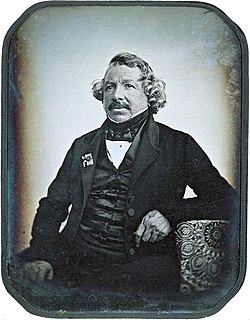
Daguerreotype was the first publicly available photographic process; it was widely used during the 1840s and 1850s. "Daguerreotype" also refers to an image created through this process.

Benjamin Rush was a Founding Father of the United States who signed the United States Declaration of Independence, and a civic leader in Philadelphia, where he was a physician, politician, social reformer, humanitarian, educator, and the founder of Dickinson College. Rush was a Pennsylvania delegate to the Continental Congress. His later self-description there was: "He aimed right." He served as surgeon general of the Continental Army and became a professor of chemistry, medical theory, and clinical practice at the University of Pennsylvania.

William Cullen FRS FRSE FRCPE FPSG was a Scottish physician, chemist and agriculturalist, and professor at the Edinburgh Medical School. Cullen was a central figure in the Scottish Enlightenment: He was David Hume's physician, and was friends with Joseph Black, Henry Home, Adam Ferguson, John Millar, and Adam Smith, among others.

John William Draper was an English-born American scientist, philosopher, physician, chemist, historian and photographer. He is credited with producing the first clear photograph of a female face (1839–40) and the first detailed photograph of the moon in 1840. He was also the first president of the American Chemical Society (1876–77) and a founder of the New York University School of Medicine.

William Pepper Jr., was an American physician, leader in medical education in the nineteenth century, and a longtime Provost of the University of Pennsylvania. In 1891, he founded the Free Library of Philadelphia.

Nathan Francis Mossell was the first African-American graduate of the University of Pennsylvania School of Medicine in 1882. He did post-graduate training at hospitals in Philadelphia and London. In 1888, he was the first black physician elected as member of the Philadelphia County Medical Society in Pennsylvania. He helped found the Frederick Douglass Memorial Hospital and Training School in West Philadelphia in 1895, which he led as chief-of-staff and medical director until he retired in 1933.
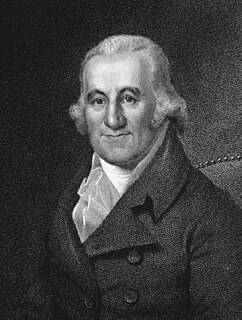
Caspar Wistar was an American physician and anatomist. He is sometimes referred to as Caspar Wistar the Younger, to distinguish him from his grandfather of the same name.

The history of photography began in remote antiquity with the discovery of two critical principles: camera obscura image projection and the observation that some substances are visibly altered by exposure to light. There are no artifacts or descriptions that indicate any attempt to capture images with light sensitive materials prior to the 18th century.
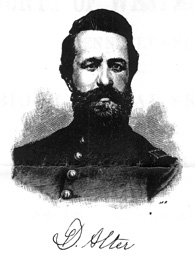
David Alter was a prominent American inventor and scientist of the 19th century. He was born in Westmoreland County, Pennsylvania and graduated from the Reformed Medical School in New York City. He had German and Swiss ancestry.
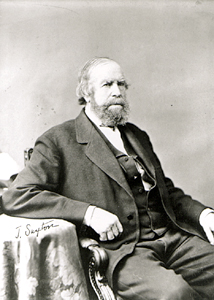
Joseph Saxton was an American inventor, watchmaker, machinist, and photographer from Pennsylvania. A daguerrotype taken by Saxton in 1839 is the oldest known photograph taken in the United States.
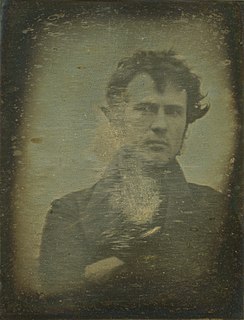
Robert Cornelius was an American photographer and pioneer in the history of photography. He designed the photographic plate for the first photograph taken in the United States, an image of Central High School taken by Joseph Saxton in 1839. His self image taken in 1839 is the first known photographic portrait of a human taken in the United States. He operated two of the earliest photography studios in the United States between 1841 and 1843 and implemented innovative techniques to significantly reduce the exposure time required for portraits.

Thomas Story Kirkbride was a physician, alienist, hospital superintendent for the Institute of the Pennsylvania Hospital, and primary founder of the Association of Medical Superintendents of American Institutions for the Insane (AMSAII), the organizational precursor to the American Psychiatric Association. Along with Dr. Benjamin Rush he is considered to be the father of the modern American practice of psychiatry as a specific medical discipline. His directive and organization of institutions for the insane were the gold-standard of clinical care in psychiatry throughout the 19th century.
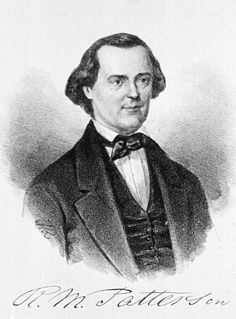
Robert Maskell Patterson was an American chemist, mathematician, and physician. He was a professor of mathematics, chemistry and natural philosophy at the University of Pennsylvania and professor of natural philosophy at the University of Virginia. He also served as director of the United States Mint and as president of the American Philosophical Society.
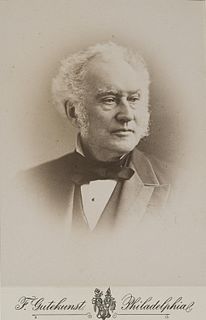
Samuel David Gross was an American academic trauma surgeon. Surgeon biographer Isaac Minis Hays called Gross "The Nestor of American Surgery." He is immortalized in Thomas Eakins' The Gross Clinic (1875), a prominent American painting of the nineteenth century. A bronze statue of him was cast by Alexander Stirling Calder and erected on the National Mall, but moved in 1970 to Thomas Jefferson University in Philadelphia.

John Jabez Edwin Paisley Mayall was an English photographer who in 1860 took the first carte-de-visite photographs of Queen Victoria. He is most well known for his 1875 portrait of Karl Marx.

Robert Empie Rogers was a United States chemist.

Frederick Gutekunst was an American photographer from Philadelphia, Pennsylvania. He opened his first photographic portrait studio with his brother in 1854 and successfully ran his business for sixty years. He grew to national prominence during the American Civil War and expanded his business to include two studios and a large phototype printing operation. He is known as the "Dean of American Photographers" due to his high quality portraits of dignitaries and celebrities. He worked as the official photographer of the Pennsylvania Railroad and received national and international recognition for his photographs of the Gettysburg battlefield and an innovative 10-foot long panoramic photograph of the Centennial Exposition.
The practice and appreciation of photographyin the United States began in the 19th century, when various advances in the development of photography took place and after daguerreotype photography was introduced in France in 1839. In 1866, the first color photograph was taken.
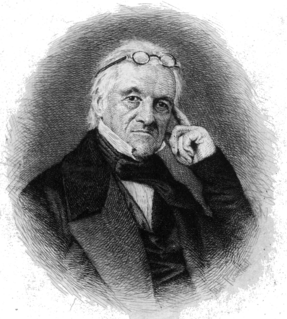
John Redman Coxe was a physician and professor of medicine at the University of Pennsylvania.

Franklin Bache was an American physician.
References
- 1 2 3 Hannavy, John (2013), "Goddard, Paul Beck (1811–1866)", Encyclopedia of Nineteenth-Century Photography, Routledge, p. 596, ISBN 9781135873271
- ↑ "APS Member History". search.amphilsoc.org. Retrieved 2021-04-09.
- 1 2 3 Barger, M. Susan; White, William B. (2000) [First published 1991]. The Daguerreotype: Nineteenth-Century Technology and Modern Science. JHU Press. pp. 33–34. ISBN 978-0-8018-6458-2.
- ↑ "Death of Dr. Paul Beck Goddard". The New York Times. July 6, 1866. Retrieved 2017-06-30.